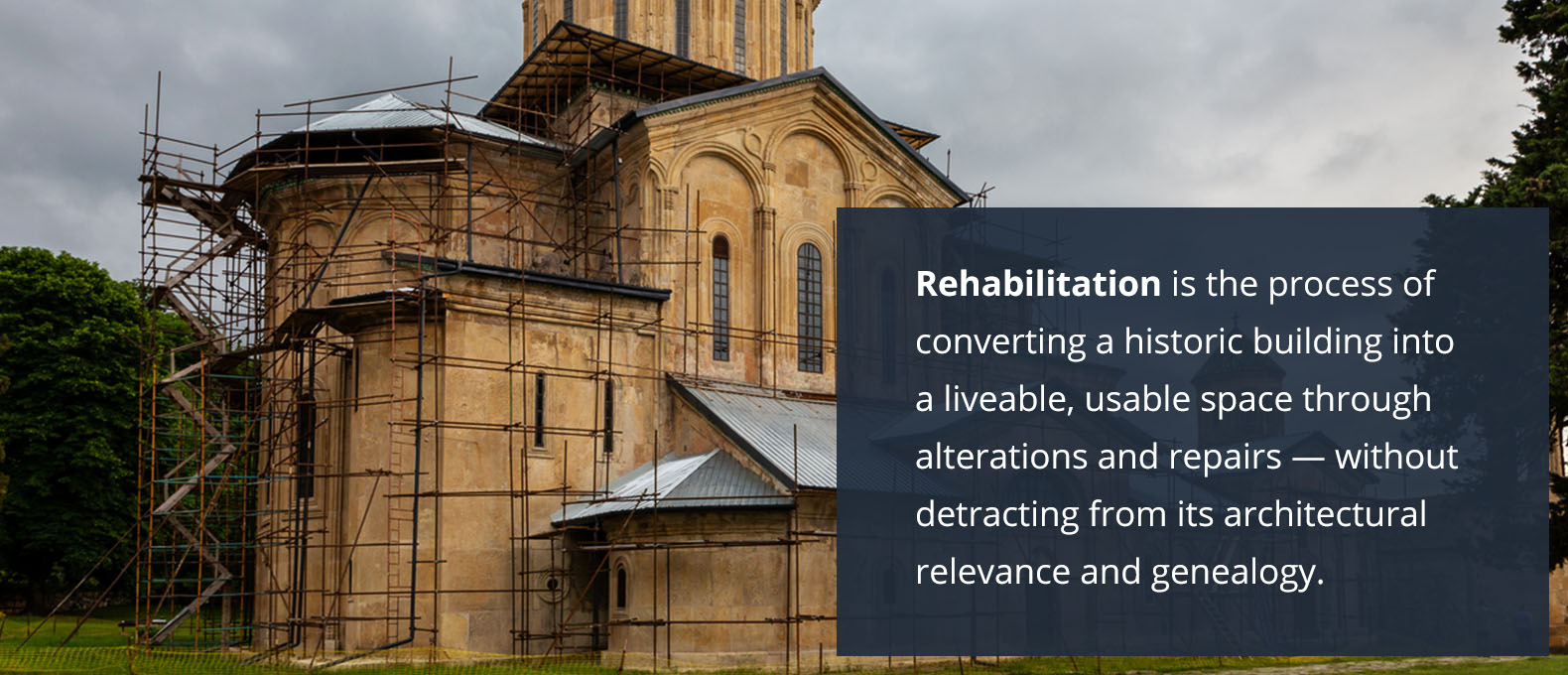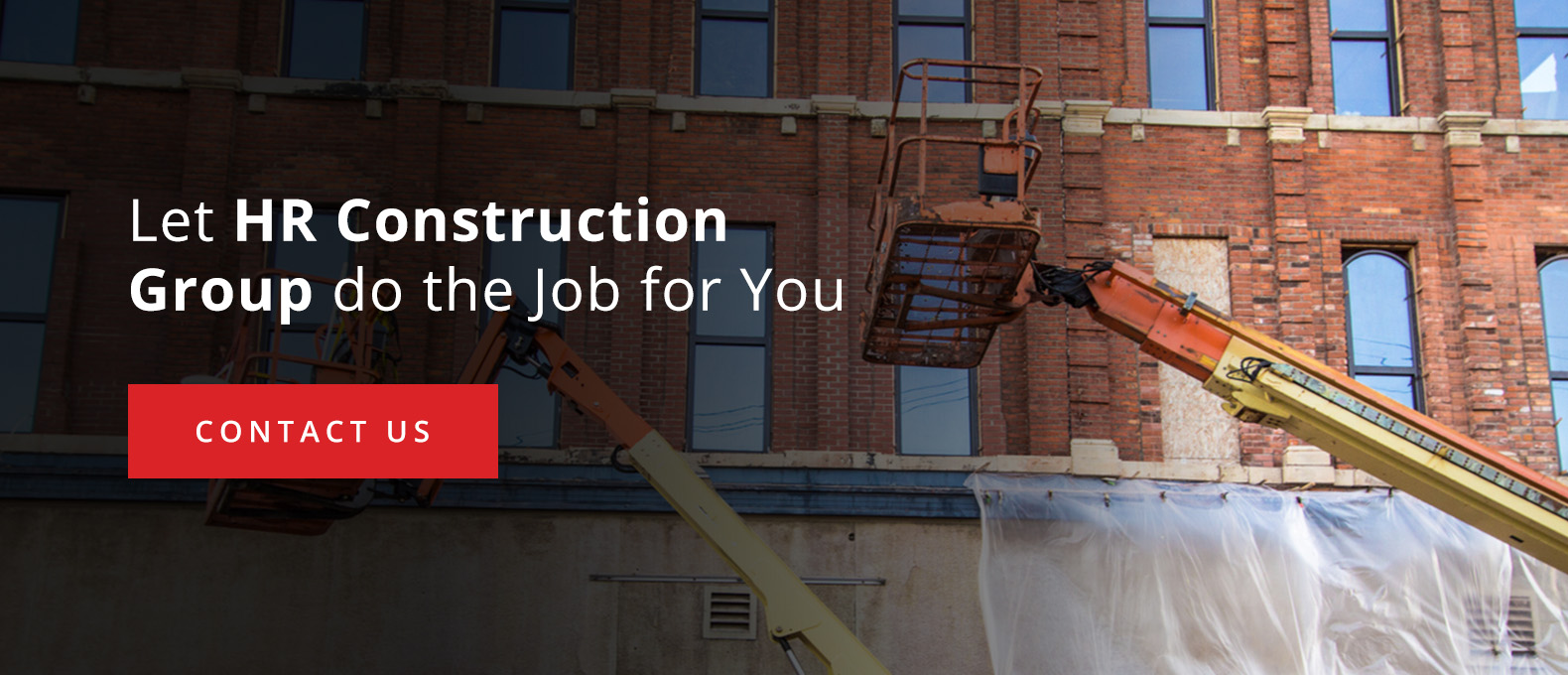Owning a historic building is fascinating yet daunting because of the pressure or expectation for it to maintain its integrity and reputation throughout the years. Naturally, with time and traffic, you could expect your investment to suffer gradual wear and tear.
Depending on the building type and its use, you will choose a suitable approach to bring it back to its former glory. Whether you want it to revert to its original state or add modern elements to traditional construction, we’ll explain the difference between restoring, rehabilitating, and renovating your historic building to help you decide.
What Is Considered a Historic Building?
Historic buildings are those built during specific eras that signify a time and events distinct to that period. They are generally older than fifty years and may include styles like Victorian, Greek and Tudor Revival, Ranch-style, Colonial, and Gothic Revival architecture.
Historical buildings may be a significant historical or heritage site or a space that was used for a specific purpose at the time of construction.
The Difference Between Restoration, Rehabilitation, and Renovation
There are a few important distinctions between restoring, rehabilitating, and renovating a building.
Restoration
When a building is restored, it basically refers to reverting its state back to the time and era in which it was built, bearing all its significant features in mind. Here, the emphasis is on retaining its heritage and cultural value without changing too much by adding modern elements. This type of project considers the intrinsic and sentimental appraisal of a building and includes museums, art galleries, and theatres.
There are a few pros and cons associated with restoring a building. They include:
- – Cultural heritage preservation: A restoration takes time, dedication, and thoughtfulness. Restoring a historic building preserves important cultural landmarks and provides a vital glimpse into the past.
- – Cost-effectiveness: Since it involves fewer building material requirements, you will likely pay less to restore than rebuild a historic building.
- – Uniqueness: You can maintain the unique characteristics of a historic building by restoring it. Features like flooring, doors, windows, locks, hinges, lights, and walls can be restored to keep its look and feel as close to the way it was when it was first built.
There are a few drawbacks that come with a restoration project. They are:
- – Structural challenges: Older buildings may have suffered damage over the years or have become too structurally unstable to initiate a simple restoration. These projects might require more time and cost investment.
- – Compliance and regulations: Older buildings may not comply with updated building codes and safety regulations. You would need to obtain the necessary documentation and plans to ensure you can execute the job to the required specifications.

Rehabilitation
Rehabilitation is the process of converting a historic building into a liveable, usable space through alterations and repairs — without detracting from its architectural relevance and genealogy. Despite its historic references, rehabilitation combines traditional and modern elements to make a building functional in current living situations.
Some advantages of rehabilitation include:
- – Increased versatility: By offering the best of both worlds, rehabilitating a building provides the cultural and historical influence of the era it was built while providing contemporary attributes that would make it easier to comply with current building codes and safety regulations.
- – Cost-effectiveness: Since you can implement modern equipment and other elements, you may find replacing and repairing these items is cheaper than using older parts and finishes from the original building.
- – Flexibility: Rehab projects allow you to be flexible in terms of the types of material you can use without losing their architectural esteem.
As with restorations, there are cons to consider with rehabilitation projects:
- – Blurring lines: It is easy to cross the line between upgrading functional parts and replacing features of historical significance when doing a rehabilitation project. The aim is always to ensure the changes do not overpower the original architecture to accommodate a modern reinvention. The building’s rich history must be distinguishable from all the modern alterations.
- – Compatibility: Finding the same or similar materials, designs, and quality of original parts can be difficult to source when trying to maintain the historic integrity of a building.
- – Cost implications: It could become costly to source specific materials and features that complement and maintain the building’s historic value in lieu of fully modern alterations.
Renovation
Historic building renovation projects are similar to rehabilitations as they include updating an existing building to modify it for modern use. For example, you might update the cast iron plumbing with more modern options or knock down a wall to improve the flow between rooms.
Renovations offer great opportunities for customization and modification — however, they can also help you preserve the integrity of a historic building while making it more useful for the current occupants.
Here are a few advantages of renovating a historic building:
- – Cost-effectiveness: Because renovations can be as limited or expansive as you want, it’s easier to scale costs.
- – Customization: With a renovation, there is more room to customize the project to suit your tastes and preferences. You also choose how much you want to change.
- – Sustainability: With the rise of solar and other energy-efficient sources and methods, you have the opportunity to equip your historic building with these to help save on energy costs while retaining traditional elements and features.
- – Increased building value: With the improvements and newer system installations, your building’s value will increase if you decide to sell it.
You may want to contemplate the drawbacks of renovating your historic building. They include:
- – Loss of cultural and architectural significance: You may lose many elements associated with the historic and architectural nature of your building by renovating it with contemporary features.
- – Cost implications: Renovating a building can be expensive, especially for larger sections.
- – Disturbance: In most cases, renovations happen over extended periods, turning parts of your building into a prohibited construction zone. This may limit usable space and inconvenience tenants and guests.
LEARN MORE ABOUT OUR HISTORIC BUILDING SERVICES
Choosing Your Approach
Considering the pros and cons of each project, you might have a few other boxes to tick before deciding on the right type of project. Ask yourself these questions:
- – What do you want to keep or change and how much of the building do you want to modernize or leave traditional?
- – Do you have the right budget to accommodate the changes you’d like to implement, with a little wiggle room for unexpected costs?
- – Consider a restoration vs. renovation — how would the changes you make impact your building’s layout and historical value?
- – Are there any deadlines that tie in with your time and budget limitations that will influence the project type?
Let HR Construction Group do the Job for You
At HR Construction Group, we firmly believe in building experiences worth repeating. Our clients are loyal because we put them first by assigning a dedicated, creative, skilled, and trustworthy project team to deliver high-quality work every time.
Join our growing family of satisfied clients by reaching out to us for your next building project. Call us at (301)330-1650 or complete a contact form and we’ll get in touch to discuss your requirements.




